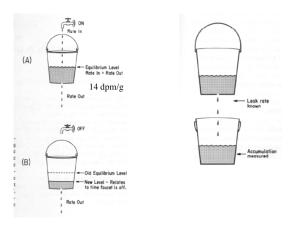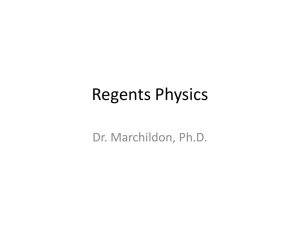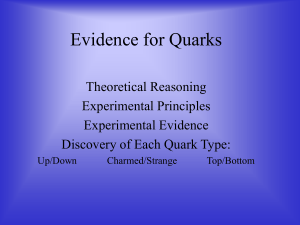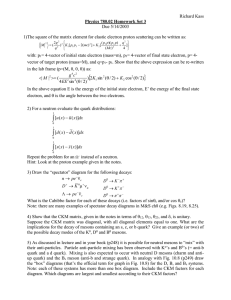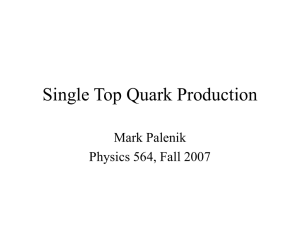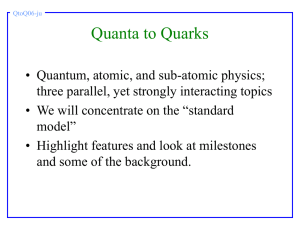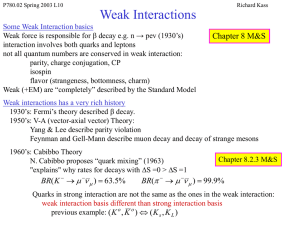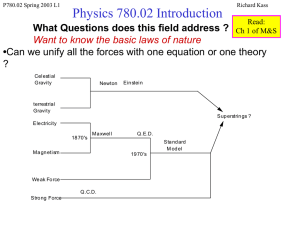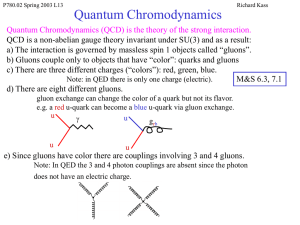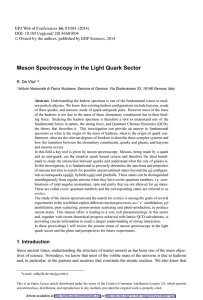P780.02 Course Outline (WORD)
advertisement
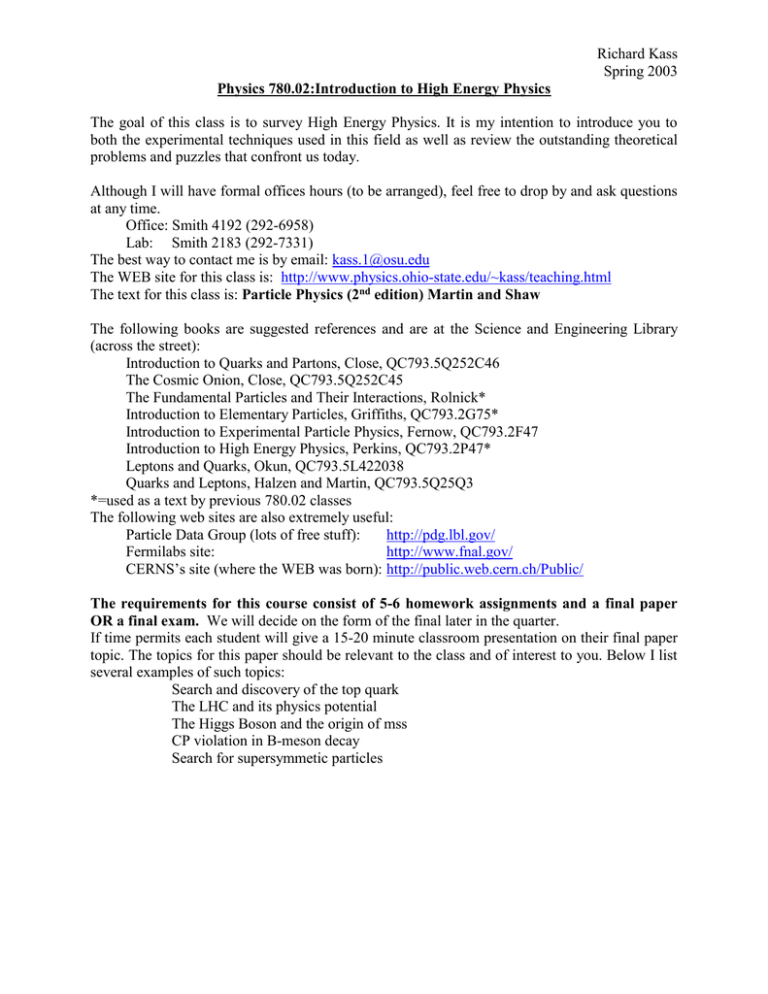
Richard Kass Spring 2003 Physics 780.02:Introduction to High Energy Physics The goal of this class is to survey High Energy Physics. It is my intention to introduce you to both the experimental techniques used in this field as well as review the outstanding theoretical problems and puzzles that confront us today. Although I will have formal offices hours (to be arranged), feel free to drop by and ask questions at any time. Office: Smith 4192 (292-6958) Lab: Smith 2183 (292-7331) The best way to contact me is by email: kass.1@osu.edu The WEB site for this class is: http://www.physics.ohio-state.edu/~kass/teaching.html The text for this class is: Particle Physics (2nd edition) Martin and Shaw The following books are suggested references and are at the Science and Engineering Library (across the street): Introduction to Quarks and Partons, Close, QC793.5Q252C46 The Cosmic Onion, Close, QC793.5Q252C45 The Fundamental Particles and Their Interactions, Rolnick* Introduction to Elementary Particles, Griffiths, QC793.2G75* Introduction to Experimental Particle Physics, Fernow, QC793.2F47 Introduction to High Energy Physics, Perkins, QC793.2P47* Leptons and Quarks, Okun, QC793.5L422038 Quarks and Leptons, Halzen and Martin, QC793.5Q25Q3 *=used as a text by previous 780.02 classes The following web sites are also extremely useful: Particle Data Group (lots of free stuff): http://pdg.lbl.gov/ Fermilabs site: http://www.fnal.gov/ CERNS’s site (where the WEB was born): http://public.web.cern.ch/Public/ The requirements for this course consist of 5-6 homework assignments and a final paper OR a final exam. We will decide on the form of the final later in the quarter. If time permits each student will give a 15-20 minute classroom presentation on their final paper topic. The topics for this paper should be relevant to the class and of interest to you. Below I list several examples of such topics: Search and discovery of the top quark The LHC and its physics potential The Higgs Boson and the origin of mss CP violation in B-meson decay Search for supersymmetic particles Richard Kass Physics 780.02 Tentative Course Outline Spring 2003 I) Introduction and Review a) Issues in HEP b) Units c) Relativistic Kinematics d) Feynman Diagrams II) Conservation Laws a) Invariance Principles and Conserved Quantities b) Continuous Transformations 1) Gauge Transformations 2) Isospin c) Discrete Transformations 1) Parity 2) Charge Conjugation 3) flavor oscillations and CP violation III) Quark Model a) Historical Introduction b) 1960's Quark Model c) Quark Model of 1970's-80's d) Building Mesons and Baryons e) Masses of Mesons and Baryons f) Magnetic Moments and the Quark Model g) Vector Mesons and Quarks h) Deep Inelastic Scattering VI) Weak Interactions a) History and Overview b) Cabibbo Theory c) GIM Mechanism, Neutral Currents, Charm d) Mathematical Form of Weak Interaction e) Cabibbo-Kobayashi-Maskawa Model V) The Standard Model a) History and Overview b) Spontaneous Symmetry Breaking c) Higgs Mechanism d) Experimental Consequences/Tests of Standard Model 1) Unification of Weak and EM 2) Masses of W and Z 3) Electro-Weak Interference e) Limits of the Standard Model VI) Quantum Chromodynamics (QCD) a) Overview b) Tests and Predictions VII) CP Violation and B mesons a) Overview b) Experimental Status VIII) Neutrino Oscillations a) Experimental Evidence for Neutrino Oscillations b) The Solar Neutrino Problem (solved!) IX) Experimental Techniques (time permitting) a) Ingredients of HEP Experiments b) Examples of HEP detectors X) Where Do We Go From Here ? a) What's Left to Do ? b) Experiments to Watch in the Next Year Or So

